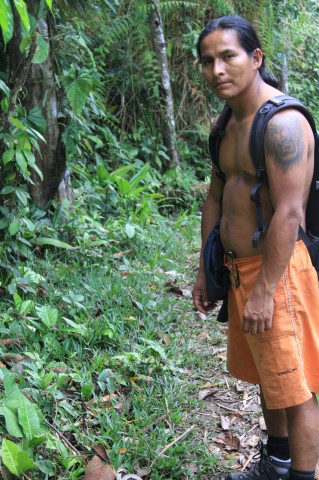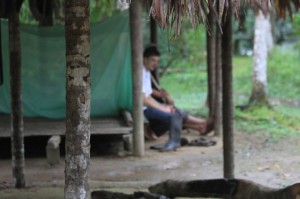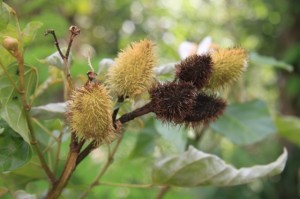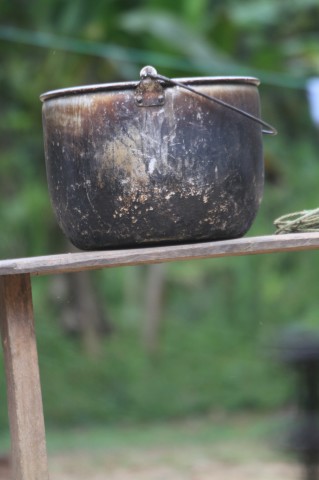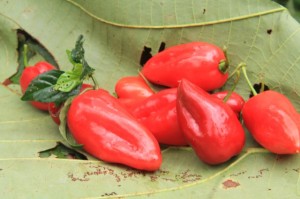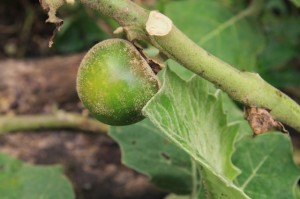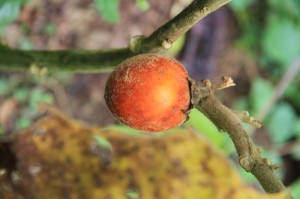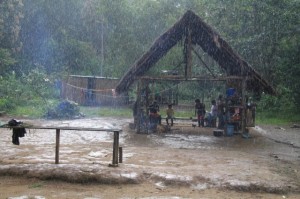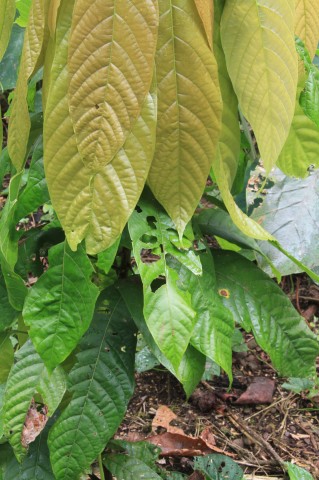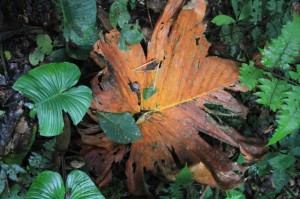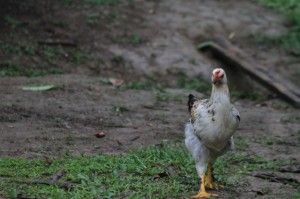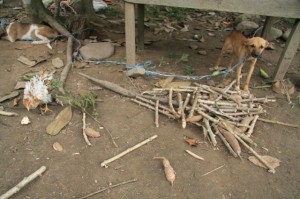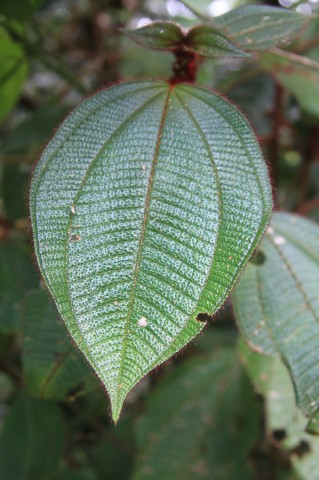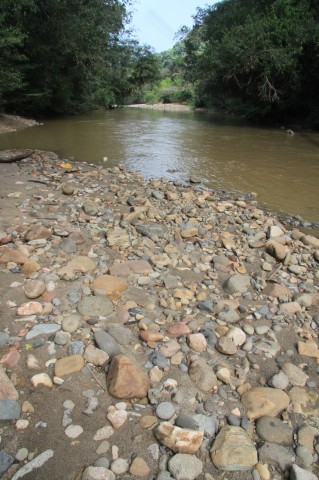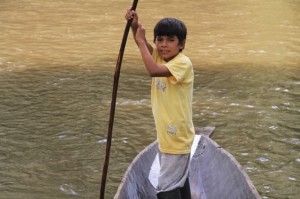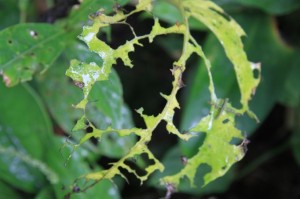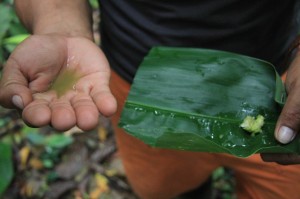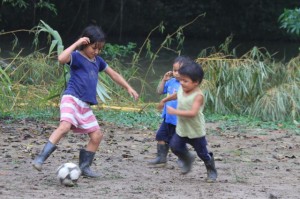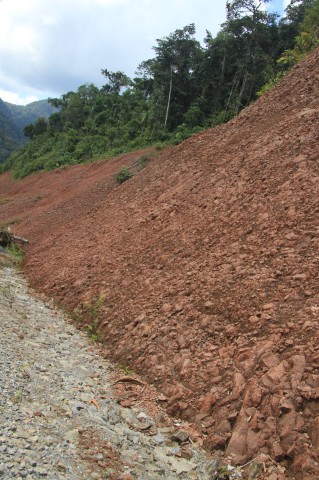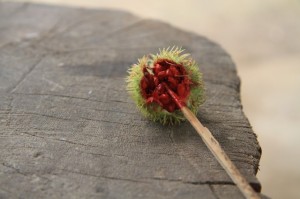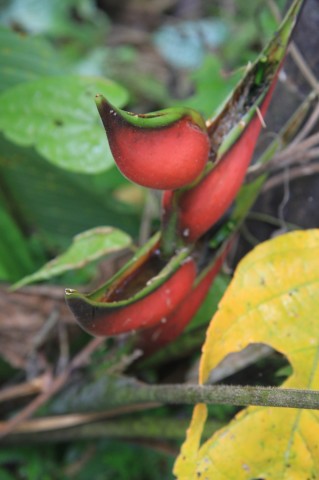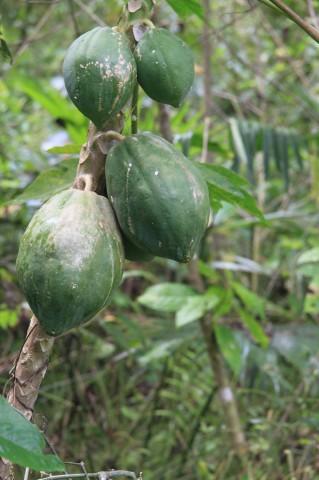The Shuar is one of the indigeneous tribes in Ecuador and among other places, can be found living along the shores of the Macuma River in-land from Macas in the south. I had the opportunity to visit the village of Yamaram Tsawa, home of Shakay, who is a naturalist and runs guided tours through the rainforest. On these tours, he gives explanations about various plants, flowers, roots, herbs and vegetables.
In his village of Yamaram Tsawa, live his parents with some of their 15 children and grandchildren. Others have moved onto to other villages, all of which are still in the Ecuador jungle, except for Shakay who mostly visits when he’s taking westerners for hikes through the jungle.
Shakay managed to travel outside of Ecuador, learn English among other languages and set up a shop in Banos, a small but growing town that attracts Europeans and Americans. He learned most of knowledge about the rainforest and its natural beauty from his grandfather. Shakay and his brothers have been helping his family build a new path to the top of the mountain and a lodge that would house people with better facilities than what they currently offer, which is essentially a tent and a mattress.
A little history about the Shuars and their mysterious past: In pre-Columbian times the art of shrinking heads was widespread in the Andean area. Early chronicles have given us excellent descriptions of shrunken heads and the methods of their preparation among the Indians of the Ecuadorian Coast. Obviously this is still not in practice, but to understand the motives behind the preparation of tsantsa it is necessary to realize that the tsantsa itself possesses tsarutama or magical power.
Immediately following a particular battle, the shrunken head was taken as a trophy, which indicated that the maker had properly fulfilled the obligation to his lineage in taking blood revenge. Possessing the tsantsa itself would benefit the warrior’s good fortune as well as please the spirits of his ancestors. The warrior could expect the spirits of their dead relatives to bestow them with good crops and fortune.
Today, they live mostly in tropical rainforest between the upper mountains of the Andes, and the tropical rainforests and savannas of the Amazonian lowlands, in Ecuador extending to Peru. Shuar refer to Spanish-speakers as apach, and to non-Spanish/non-Shuar speakers as inkis. Europeans and European Americans used to refer to Shuar as jívaros or jíbaros; this word probably derives from the 16th century Spanish spelling of “shuar”, but has taken other meanings including “savage” (and Shuar consider it an insult); outside of Ecuador, Jibaro has come to mean “rustic”.
The areas where they now live are under threat, just like the rest of the Andes…..in fact, while we were there, we could hear electronic saws off in the distance. Shakay tells us that the area where he lives is primary rainforest however and that cutting is only for building their own lodges rather than selling trees for wood to the outside world. I wonder if it’s only a matter of time however given Ecuador’s economic dependency on oil among other things. I’ll be writing a summary piece up on the oil industry’s presence in Ecuador later this month.
Below is a sample of some of the lush rainforest you’ll see on hikes and walks. Some of the leaves were half my size btw and even those that weren’t, they were massive in comparison to what you’d find in the North American mountains.
Bamboo in the Rainforest:
Pot for cooking on the hot fire in the Yamaram Tsawa Village:
Jimia Spicy Red Pepper:
Narananjilla:
The Yamaram Tsawa Village amidst a major afternoon rainstorm:
Wild Mushrooms:
Cocao Plant:
Their main staple is chicken with vegetables, most of them grown wild: (jungle carrots, red peppers, green beans, herbs and potatoes)
Sepui, also known as white jungle onion, which Shakay claims helps with skin conditions including acne. One night, he warmed it up next to the fire until the ‘white’ was milky and hot and then applied it with a stick on my face which I left to dry overnight:
Dogs are very common but none of them have a lot of weight on their bones:
Moss is also common because of the dampness and continual rain particularly during the winter:
The Macuma River, not exactly crystal blue and yet they use river water to cook with on a regular basis:
Shakay cuts and squeezes the plant Tseiktar, which is used as medicine for sinuses. The idea is that you squeeze its juice, then mix a little water to dilute its strength, followed by sniffing it up your nostrils with a few strong snorts. Be prepared to cry.
Kids play soccer along the Macuma River, rain or shine:
Red earth on the way from Macas to the village:
Chiote Plant that Shakay used to paint my face (helps to prevent Jungle Fever we were told)
Papayas in the rainforest:

Renee Blodgett is the founder of We Blog the World. The site combines the magic of an online culture and travel magazine with a global blog network and has contributors from every continent in the world. Having lived in 10 countries and explored nearly 80, she is an avid traveler, and a lover, observer and participant in cultural diversity.
She is also the CEO and founder of Magic Sauce Media, a new media services consultancy focused on viral marketing, social media, branding, events and PR. For over 20 years, she has helped companies from 12 countries get traction in the market. Known for her global and organic approach to product and corporate launches, Renee practices what she pitches and as an active user of social media, she helps clients navigate digital waters from around the world. Renee has been blogging for over 16 years and regularly writes on her personal blog Down the Avenue, Huffington Post, BlogHer, We Blog the World and other sites. She was ranked #12 Social Media Influencer by Forbes Magazine and is listed as a new media influencer and game changer on various sites and books on the new media revolution. In 2013, she was listed as the 6th most influential woman in social media by Forbes Magazine on a Top 20 List.
Her passion for art, storytelling and photography led to the launch of Magic Sauce Photography, which is a visual extension of her writing, the result of which has led to producing six photo books: Galapagos Islands, London, South Africa, Rome, Urbanization and Ecuador.
Renee is also the co-founder of Traveling Geeks, an initiative that brings entrepreneurs, thought leaders, bloggers, creators, curators and influencers to other countries to share and learn from peers, governments, corporations, and the general public in order to educate, share, evaluate, and promote innovative technologies.

